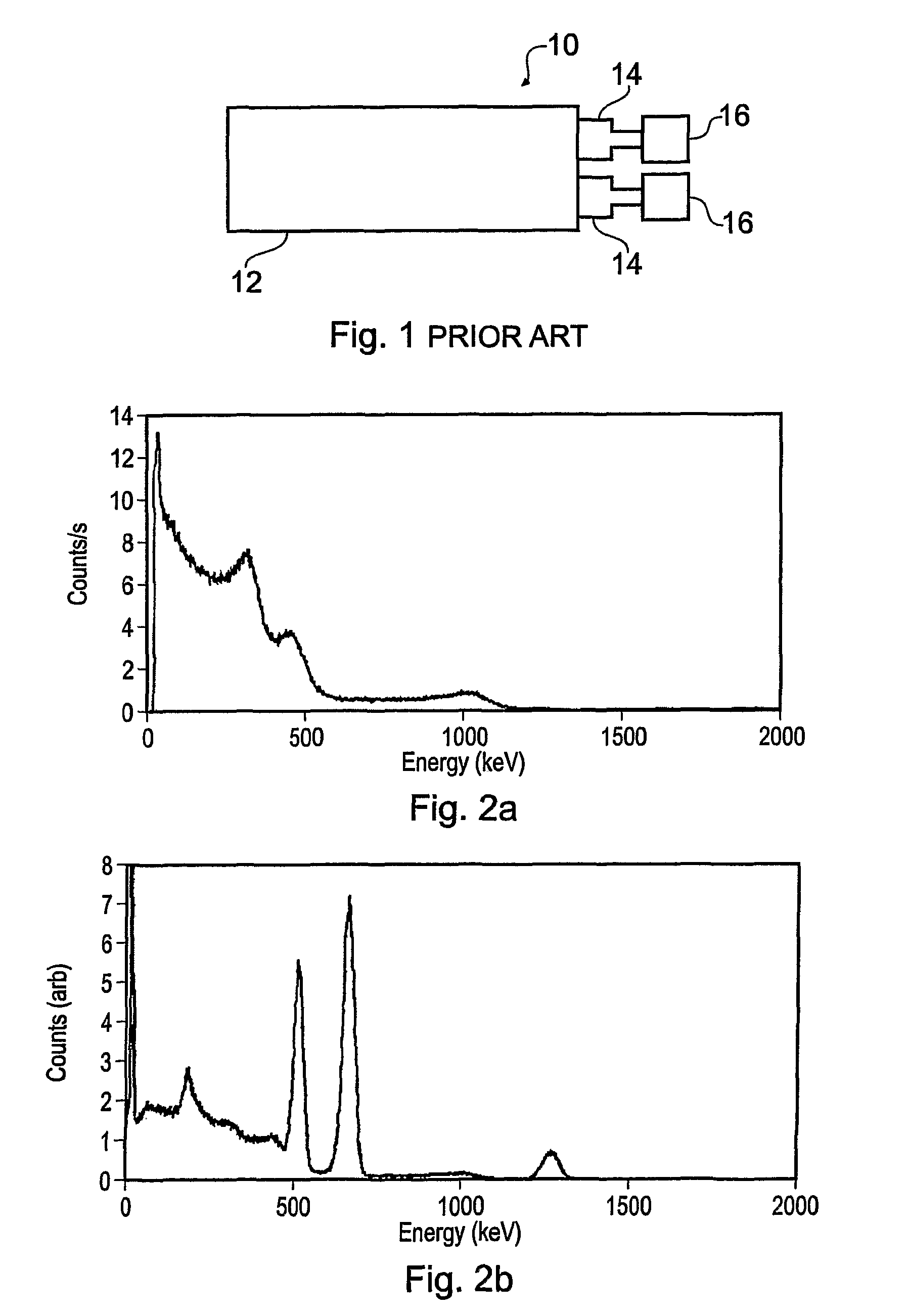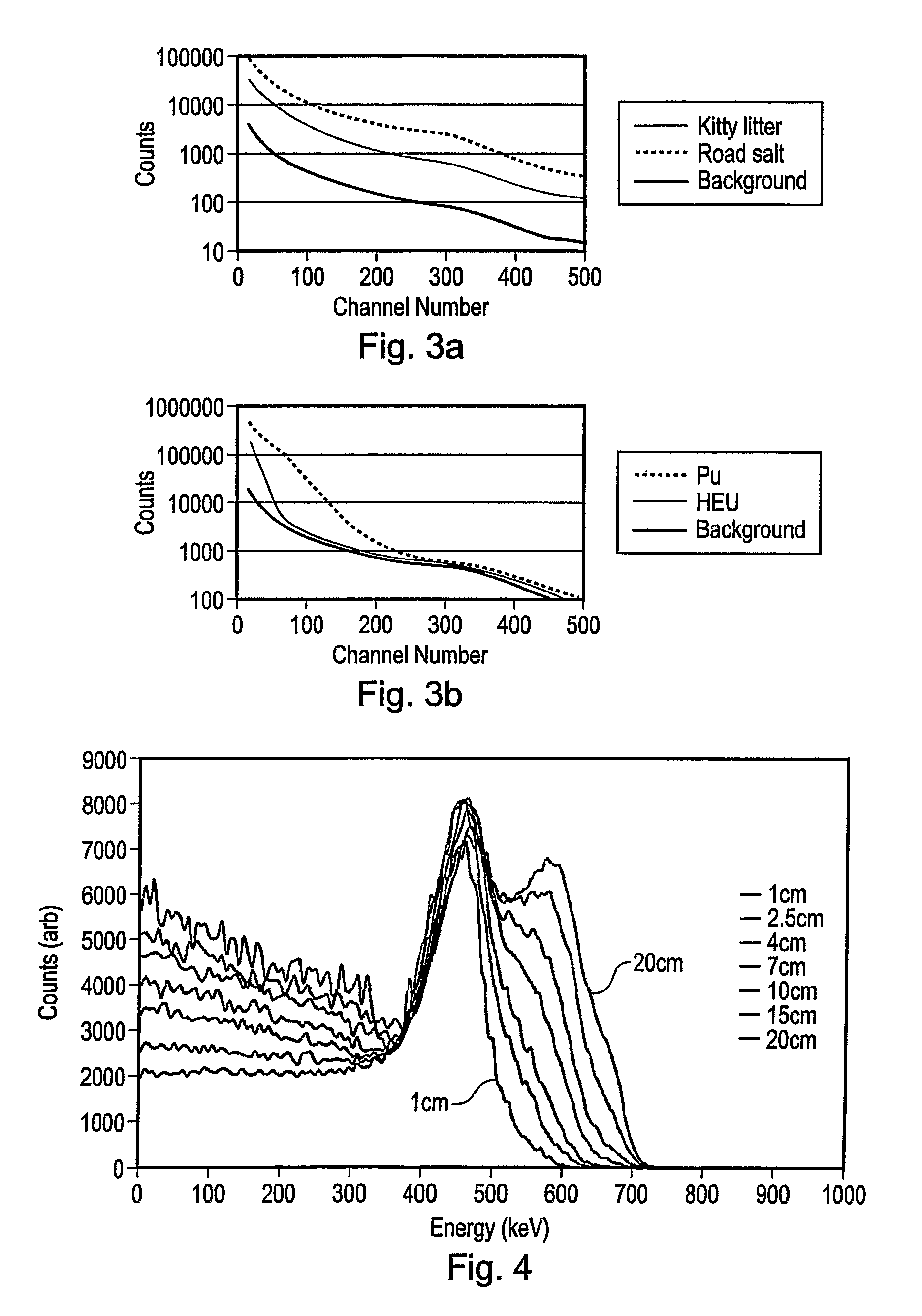Gamma ray spectrometers
a gamma ray and detector technology, applied in the field of gamma ray detectors, can solve the problems of difficult identification of radioactive isotopes, difficult to identify particular radioactive isotopes, and thick scintillation bodies tend to distort the energy-loss spectrum, so as to reduce the variation in output arising from the position of incidence of gamma rays, improve the signal to noise ratio, and improve the effect of results
- Summary
- Abstract
- Description
- Claims
- Application Information
AI Technical Summary
Benefits of technology
Problems solved by technology
Method used
Image
Examples
Embodiment Construction
[0035]FIG. 1 shows a simplified schematic representation of a conventional scintillation counter 10 of a design commonly used in existing portal radiation monitors. A scintillation body 12 formed from suitable scintillator material is optically coupled to a pair of photomultiplier tubes 14. The photomultiplier tubes 14 are abutted directly against the scintillation body 12, although light guides may be used to facilitate the optical coupling. The photomultiplier tubes 14 have associated processing electronics 16 operable to drive the photomultiplier tubes 14 and supply a signal indicative of the output of the photomultiplier tubes 14. Incoming radiation incident on the scintillation body causes excitation, and subsequent de-excitation creates photons which propagate through the scintillation body to the photomultiplier tubes where they are detected. The resulting output signal from the photomultiplier tubes generated in response to the detected photons is related to the energy of th...
PUM
 Login to View More
Login to View More Abstract
Description
Claims
Application Information
 Login to View More
Login to View More - R&D
- Intellectual Property
- Life Sciences
- Materials
- Tech Scout
- Unparalleled Data Quality
- Higher Quality Content
- 60% Fewer Hallucinations
Browse by: Latest US Patents, China's latest patents, Technical Efficacy Thesaurus, Application Domain, Technology Topic, Popular Technical Reports.
© 2025 PatSnap. All rights reserved.Legal|Privacy policy|Modern Slavery Act Transparency Statement|Sitemap|About US| Contact US: help@patsnap.com



